Autism and Puberty

Understanding Autism and the Complexities of Puberty
Puberty is a critical developmental stage marked by significant physical, emotional, and social changes. For children and adolescents with autism spectrum disorder (ASD), this period can present unique challenges due to sensory sensitivities, communication difficulties, and emotional regulation issues. Recognizing how puberty affects autistic individuals and implementing targeted support strategies is essential for fostering positive development and well-being. This article explores the biological and developmental differences, specific challenges, and effective approaches to guide autistic youth through this transformative phase.
How Puberty Influences Autistic Individuals
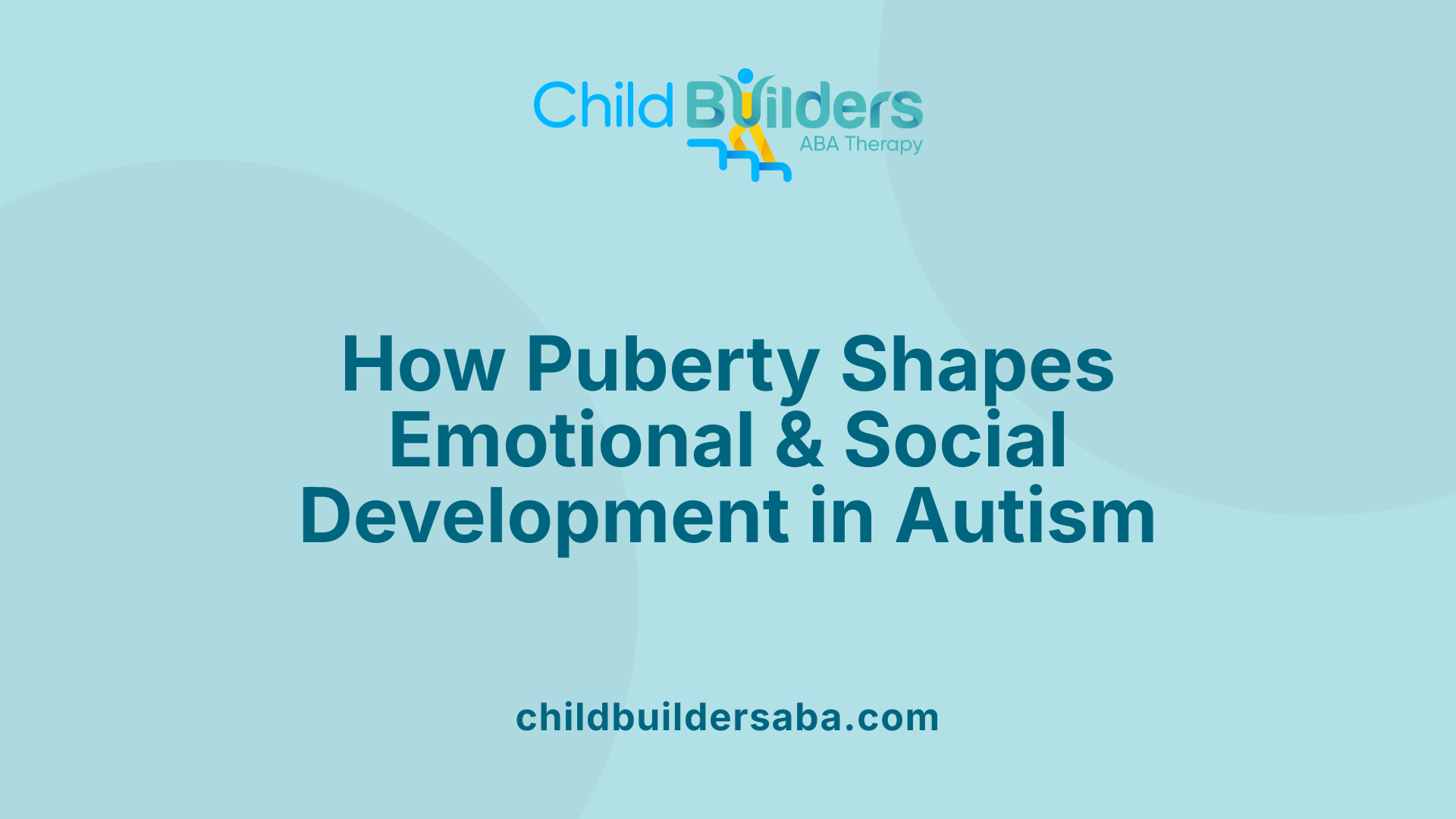
How does puberty affect autistic individuals?
Puberty brings a host of physical, emotional, and social changes that affect all adolescents, including those on the autism spectrum. While the biological process of puberty occurs similarly in autistic and neurotypical teens, its effects can be more challenging for autistic individuals.
Hormonal surges can lead to increased emotional fluctuations, such as mood swings, irritability, and heightened anxiety. Many autistic teens may find it harder to understand and manage these feelings due to difficulties with communication and emotional regulation skills.
Sensory sensitivities often intensify during puberty. Changes in body odor, new textures of clothing or hygiene products, and physical sensations like erections or menstrual cramps can become overwhelming.
These sensory and emotional shifts can lead to increased behavioral issues, including frustration, aggression, or self-injury, especially if the changes are not well understood or if support is lacking.
Social challenges also become more pronounced. Autistic adolescents may experience difficulty interpreting social cues, navigating peer relationships, or understanding social norms related to dating and personal boundaries.
Physical changes such as breast development, voice deepening, facial hair growth, and menstruation can be confusing, especially without prior education or preparation. Girls with autism might face irregular menstrual cycles and discomfort, while boys might struggle with understanding nocturnal emissions or erections.
Given these complexities, early and ongoing education tailored to their learning style is crucial. Using visual aids, social stories, and concrete language helps autistic teens understand their changing bodies and feelings.
Supporting these individuals involves collaboration among caregivers, educators, and healthcare professionals. Creating a predictable, supportive environment and monitoring mental health can mitigate risks of anxiety or depression.
This phase can also serve as an opportunity for social learning and skill development. Many autistic teens become more aware of social interactions and show increased interest in communicating with peers when appropriately supported.
Ultimately, understanding that these changes are natural and providing consistent, compassionate guidance helps autistic adolescents navigate puberty safely and confidently, promoting their emotional well-being and social integration during this pivotal time.
Biological and Developmental Aspects of Puberty in Autism
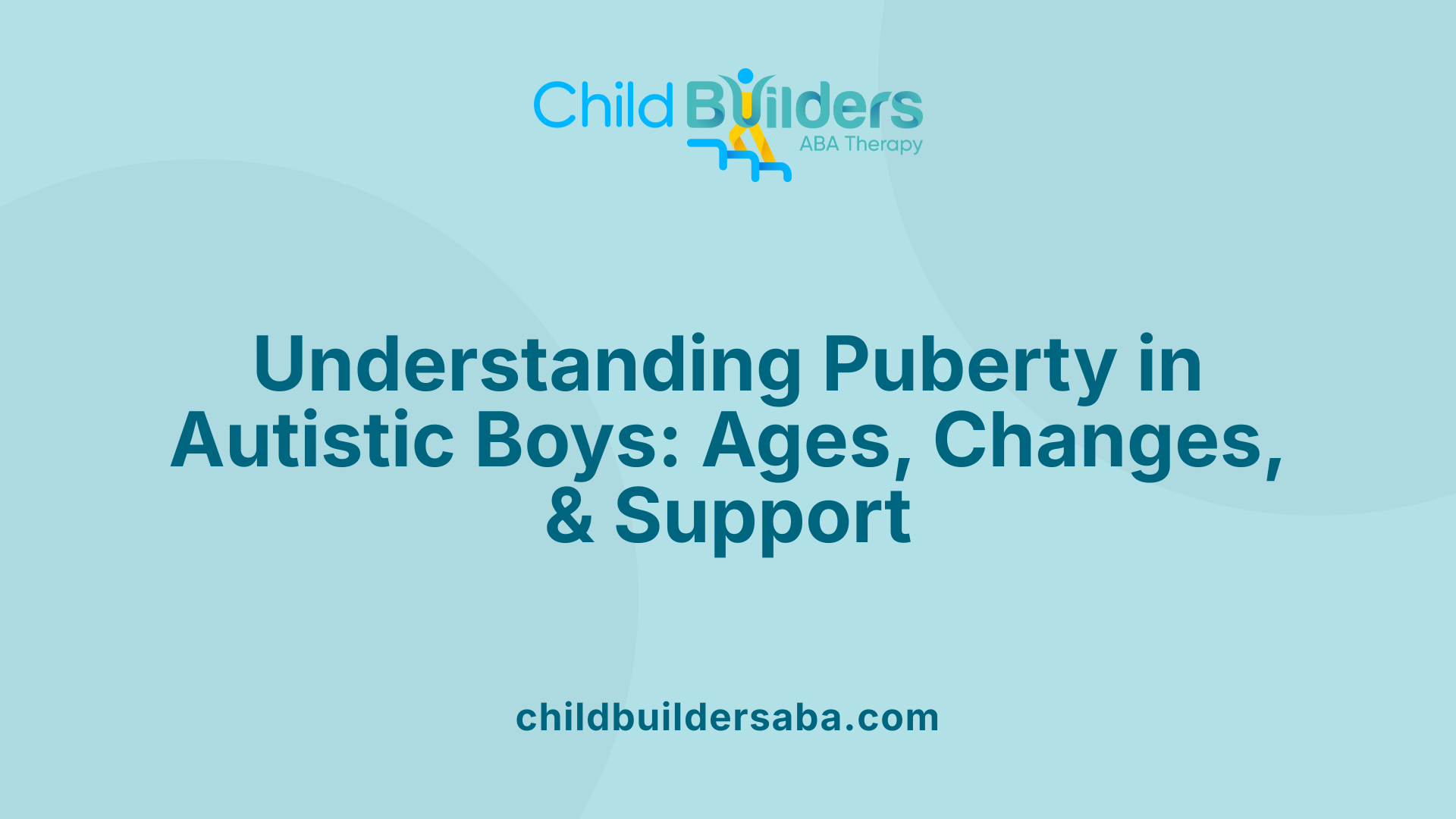
What is the typical age range for puberty in autistic boys?
Puberty in autistic boys generally starts between the ages of 8 and 13 years, closely aligning with the typical age range seen in neurotypical children. During this period, boys undergo various physical developments such as growth spurts, an increase in height and muscle mass, and the growth of facial and pubic hair. Testicular and penile enlargement also occur, often accompanied by spontaneous erections and nocturnal emissions, which are normal parts of puberty.
These biological changes can be confusing for boys with autism, especially those with communication or sensory sensitivities. They might find it difficult to understand or express their feelings about these changes. Emotional reactions, such as mood swings or anxiety, are common and may be more intense in autistic children.
Support from caregivers through clear, factual explanations and visual aids is important during this time. Tailored support helps boys understand their bodily changes and navigate social or emotional challenges related to puberty.
Overall, while the physical timeline is similar to that of neurotypical children, individual experiences, understanding, and emotional responses vary widely.
Can autism become more obvious during puberty?
Autism can become more noticeable during puberty due to increased social, academic, and environmental pressures. As adolescents face more complex social interactions and heightened expectations, existing differences in social communication and behavior may become clearer.
Repetitive behaviors, intense interests, and sensory sensitivities often continue or become more pronounced during adolescence. Additionally, emotional challenges such as anxiety, depression, or mood swings may emerge or intensify, making autism traits more apparent.
Young individuals with autism might struggle with understanding social cues, forming friendships, and managing routines under new circumstances. These challenges can lead to increased observation and awareness of autism-related behaviors.
Early recognition of these signs can lead to better support and interventions, helping autistic adolescents adapt and thrive during these critical years.
Challenges Faced During Puberty in Autistic Youth
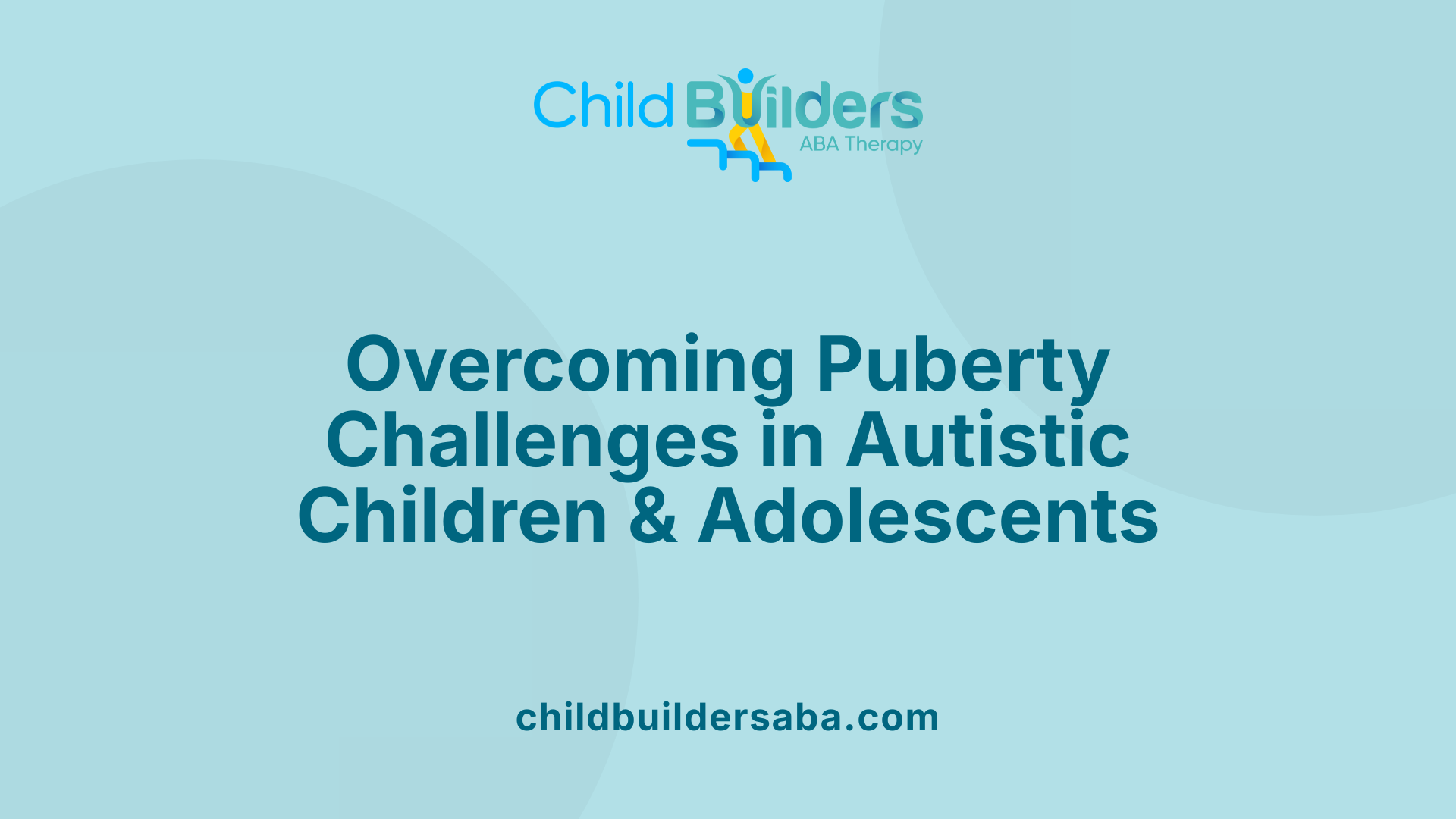
What are the challenges faced by autistic children and adolescents during puberty?
Autistic children and teenagers encounter a range of difficulties during puberty. Physiologically, hormonal changes such as increases in sex hormones lead to physical transformations like breast development in girls, voice deepening in boys, and the growth of pubic and underarm hair. While these changes are natural, autistic youth often find them confusing or overwhelming due to communication challenges and sensory sensitivities.
Behaviorally, puberty can increase behaviors such as irritability, aggression, property destruction, and self-injury. Emotional upheavals like mood swings, anxiety, and depression are common, especially since many autistic teens have less instinctive coping skills. Sensory issues—such as discomfort with menstrual hygiene products or clothing—further complicate health management.
Social challenges also hike during this period. Difficulties in understanding social cues and norms can lead to feelings of isolation or being misunderstood by peers. This social difficulty may be worsened by increased bullying or exclusion, contributing to emotional distress.
Hormonal fluctuations might also trigger more intense or challenging behaviors, which require strategies like behavioral programs and social stories to support better understanding and regulation. Moreover, mental health risks such as anxiety and depression tend to rise, making early intervention and emotional support essential.
Physical health management remains vital, including education about bodily changes, hygiene routines, and respecting privacy. Autism-related sensitivities necessitate tailored communication tools like visual supports, social stories, and clear language to facilitate understanding and reduce anxiety.
Overall, puberty presents an intricate period requiring comprehensive support. Preparing autistic youth with reliable information, emotional coping skills, and social understanding helps them navigate these changes confidently and safely. This proactive approach ensures that the physical, emotional, and social challenges of puberty are managed with sensitivity and clarity, enabling better outcomes for autistic adolescents.
Support Strategies for Navigating Puberty in Autism
What support strategies can help autistic youth navigate puberty?
Supporting autistic children through puberty involves a comprehensive approach that accounts for their unique needs and challenges. One of the most effective strategies is to provide early, factual education about body changes and hygiene routines. Visual aids such as pictures, social stories, and videos are valuable tools that help clarify what to expect during puberty and how to handle new bodily sensations.
Establishing predictable routines and using visual schedules can greatly assist autistic children in managing self-care tasks like bathing, dressing, and menstrual hygiene. These visual supports create a sense of safety and understanding, reducing anxiety and helping children feel more in control.
Open and honest communication tailored to their level of understanding is fundamental. This may include using clear, literal language and ensuring that explanations are neutral and supportive. Discussions should cover topics like boundaries, consent, private vs. public behaviors, and appropriate social interactions, fostering both safety and self-awareness.
In addition to visual and verbal education, social skills training can help improve peer interactions and reduce feelings of social isolation. Addressing emotional regulation through therapies such as Cognitive-Behavioral Therapy (CBT) helps manage mood swings, anxiety, and stress associated with puberty.
Professional collaboration is crucial. Working with therapists, educators, and healthcare providers ensures that specific concerns—such as challenging behaviors, medical issues, or online safety—are effectively managed. Medical assessments might be needed for issues like hormonal fluctuations or seizure risks.
Creating a supportive environment involves empowering children to build confidence in their body image and social understanding. Promoting autonomy in hygiene and daily routines, combined with ongoing emotional support, helps autistic youth navigate puberty more confidently and safely.
Gender-Specific Considerations in Autism During Puberty
Are there specific considerations for puberty in girls and boys with autism?
Puberty presents unique challenges and considerations for children with autism spectrum disorder (ASD). For girls and boys with autism, physical, social, and emotional changes during this time require tailored approaches to support.
For girls, puberty involves breast development, the onset of menstruation, and hormonal fluctuations that can lead to mood swings or behavioral changes. Many girls with autism may experience irregular periods or discomfort during menstruation and may need extra education about managing hygiene routines. Using visual aids, social stories, and factual information helps them understand these changes and promotes independence.
Boys experience growth of facial and body hair, voice deepening, and testicular development. They might also begin to ejaculate semen during sleep (wet dreams). Clear explanations about erections, ejaculation, and how their bodies are changing can reduce confusion and anxiety. It is important to communicate in simple, literal language and offer visual supports for better understanding.
Both sexes are at increased risk of early pubertal onset, particularly among autistic girls, where studies have shown a higher prevalence of precocious puberty. The physical and emotional changes can be more intense for children with autism due to sensitivities, communication barriers, and social difficulties.
Support strategies should include early discussions, use of social stories, visual supports, and collaboration with healthcare providers to monitor physical and emotional health. Creating a supportive environment helps children with autism navigate these changes safely, reducing anxiety and fostering confidence.
In summary, personalized education, early planning, and ongoing support are essential for helping children on the spectrum move through puberty smoothly and with understanding. Addressing their specific needs ensures better emotional regulation, behavior management, and overall well-being during this critical developmental period.
Behavioral and Emotional Changes in Autistic Youth During Puberty
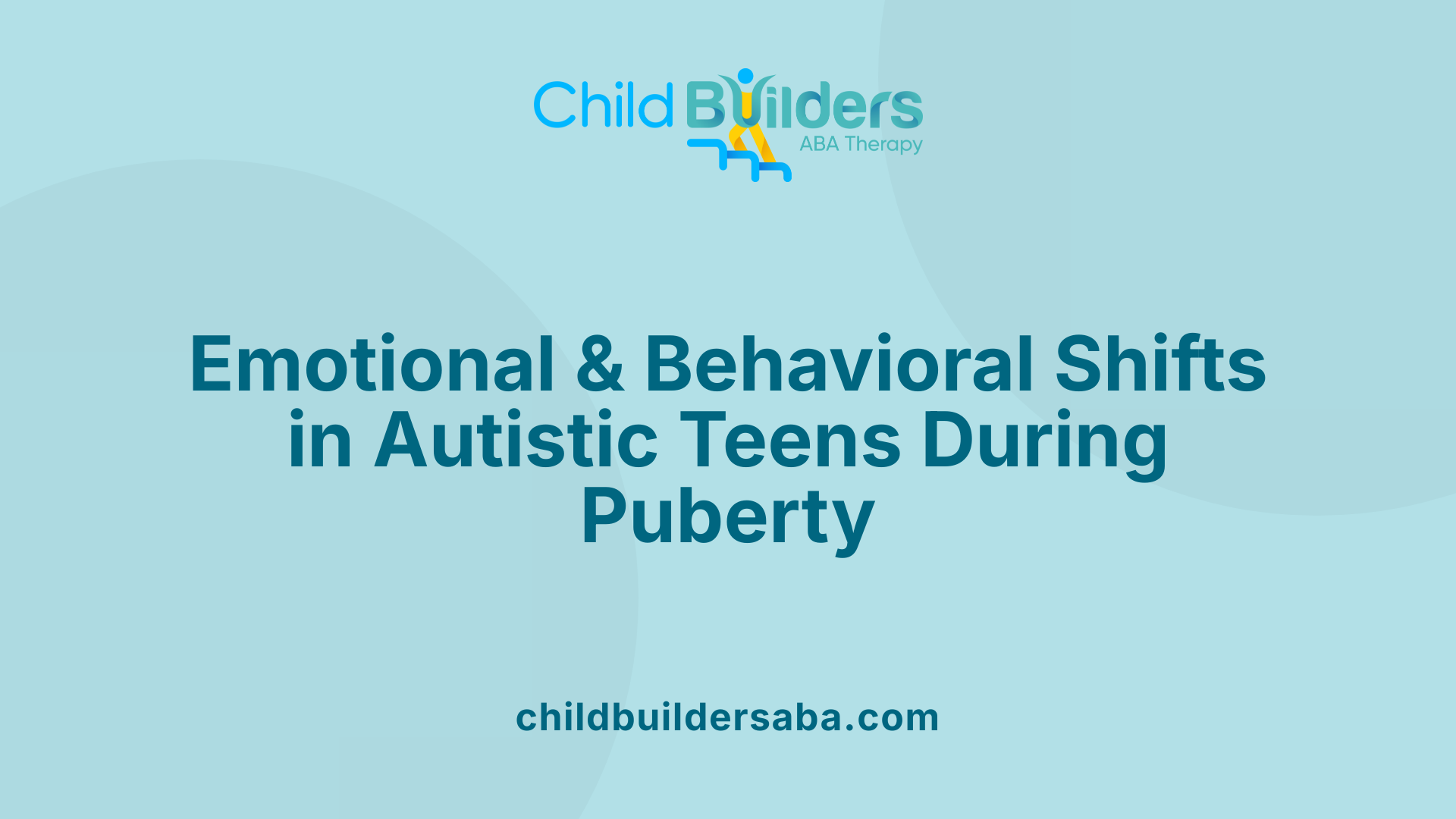
What behavioral or emotional changes can occur during puberty in autistic individuals?
Puberty is a time of significant change for all young people, and autistic youth often experience unique challenges during this developmental stage. Many autistic teens face increased emotional volatility, which may present as heightened anxiety, mood swings, irritability, and emotional outbursts. These reactions can be partly linked to hormonal fluctuations, which influence mood and behavior.
Hormonal changes may also lead to heightened sensory sensitivities, sleep disturbances, and the development of new routines or obsessive behaviors. Autistic adolescents might become more withdrawn or, conversely, seek increased engagement to cope with their feelings.
Social interactions can become more complex during puberty. Many autistic teens find it difficult to navigate new social dynamics, leading to increased frustration or social withdrawal. The challenges in understanding social cues can make relationships with peers and family more difficult.
Moreover, puberty can intensify existing mental health issues such as anxiety and depression. Signs may include withdrawal from activities, decreased interest in hobbies, or emotional distress.
Recognizing these changes early and providing appropriate support is essential. Tailored behavioral strategies, social skills training, and mental health interventions like Cognitive Behavioral Therapy (CBT) can help manage these difficulties.
Overall, puberty presents a complex period of growth, demanding patience, understanding, and strategic support for autistic youth to navigate emotional and behavioral changes effectively.
Recent Research and Future Directions on Puberty in Autism
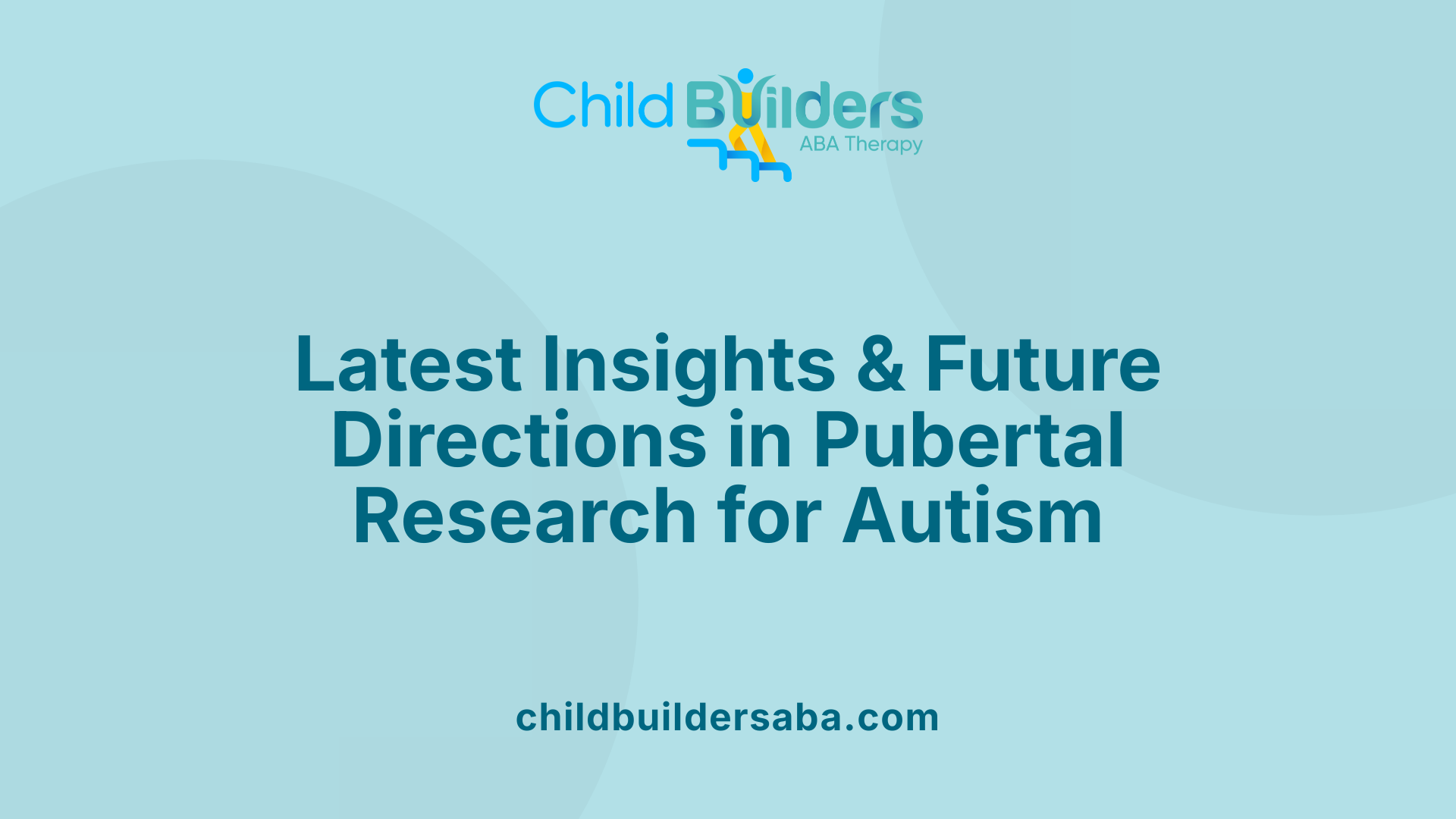
Is there research on puberty timing and developmental implications in autistic youth?
Research shows that children with autism spectrum disorder (ASD) tend to experience puberty earlier than their neurotypical peers. Notably, autistic females often begin breast development and menstruation approximately nine months earlier than non-autistic girls. This phenomenon is termed precocious puberty and appears more frequently in females with autism.
While boys with ASD generally go through puberty at ages similar to their peers, they often progress through the developmental stages at a faster pace. This accelerated development can influence emotional and social adjustments during adolescence.
Another significant factor linked to earlier pubertal onset in autistic children is higher body mass index (BMI). Increased weight has been associated with earlier physical development, highlighting the complex interaction between physical health and puberty timing.
Despite these differences in pubertal timing, current studies suggest that puberty timing alone does not directly predict internalizing symptoms such as anxiety or depression in autistic youth. However, the physical and hormonal transformations during puberty can heighten risks for behavioral issues, social difficulties, and emotional distress.
Understanding these patterns is crucial for supporting autistic adolescents. Early education about bodily changes, use of visual tools and social stories, and consultation with healthcare providers are essential strategies to help navigate these developmental phases. Recognizing the unique challenges faced by girls and boys during puberty can lead to better integrated support, fostering healthier social and emotional growth.
This ongoing research points toward a need for tailored interventions aimed at addressing the neurodevelopmental and physical changes during puberty in autism. Future studies are expected to delve deeper into how hormonal fluctuations influence behavior and brain development, paving the way for improved guidance and support systems for autistic youth as they transition into adulthood.
Supporting Autistic Youth Through Puberty
Navigating puberty is a pivotal challenge for autistic children and adolescents. Understanding the biological, emotional, and social changes they undergo allows caregivers, educators, and health professionals to provide empathetic, early, and tailored support. Using visual aids, social stories, and consistent routines helps demystify bodily changes and reduce anxiety. Open communication about sexuality, safety, and personal boundaries fosters independence and confidence, which are essential for healthy development. Continued research into puberty timing and neurodevelopmental differences informs better support strategies, ultimately promoting resilience, well-being, and successful transition into adulthood for autistic individuals.
References
- Autism and Puberty - Child Mind Institute
- Autism and puberty
- Lurie Center for Autism: Puberty - Massachusetts General Hospital
- Autism and risk of precocious puberty - ScienceDirect.com
- The Association between Autism Spectrum Disorder and Precocious ...
- Autism and Puberty: How to Support Your Child
- Puberty and Your Child with Autism - AbilityPath
- Puberty - Teenage Resource



.jpg)

































































































